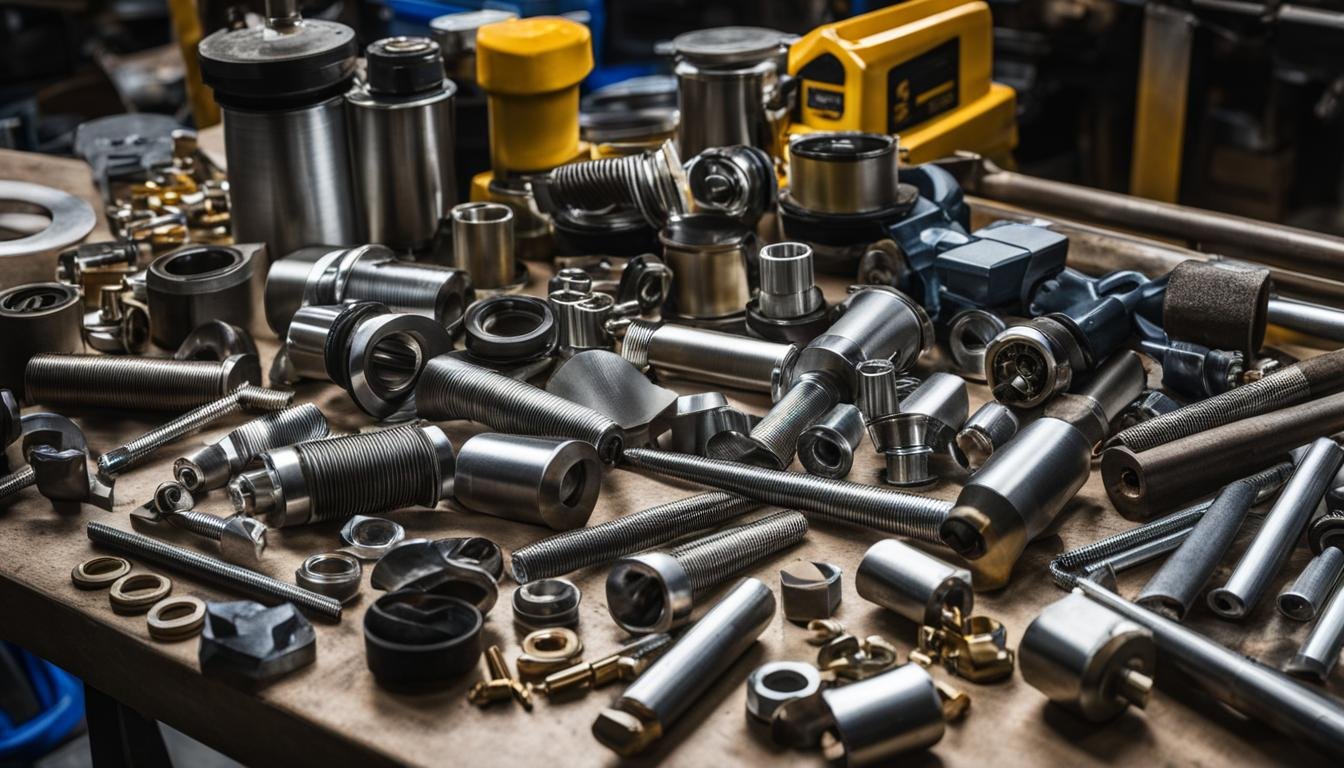When it comes to the construction of vacuum cleaners, a variety of materials are used to ensure durability, functionality, and ease of use. From the external structure to the internal components, each part is carefully selected to create a high-quality and efficient vacuum cleaner.
In the past, vacuum cleaners were primarily made of metals such as stamped steel cases and cast aluminum attachments. However, with advancements in technology, the use of plastics has become more prevalent in vacuum cleaner manufacturing. Plastics offer numerous advantages, including reduced production costs and lighter weight, making vacuum cleaners more user-friendly.
Commonly used plastics in vacuum cleaner construction include ABS (acrylonitrile-butadiene-styrene) and polycarbonates. These materials are chosen for their durability, strength, and resistance to stains and chemicals. ABS plastics are often used for vacuum cleaner cases, while polycarbonates are used for bases and fans. Nylon is another essential material used for gears, while synthetic rubber materials like Buna-N and Viton are used for gaskets and seals.
Key Takeaways:
- The materials used in vacuum cleaner manufacturing include a combination of metals and various plastics.
- Plastics have become more prevalent due to their cost-effectiveness and lightweight properties.
- Common plastics used in vacuum cleaners are ABS and polycarbonates for cases, and nylon for gears.
- Synthetic rubber materials like Buna-N and Viton are used for gaskets and seals.
- The use of different materials ensures the durability, functionality, and efficiency of vacuum cleaners.
The Evolution of Vacuum Cleaner Materials
In the early days of vacuum cleaner manufacturing, steel cases and cast aluminum attachments were commonly used. However, with advancements in plastics technology, the materials used in vacuum cleaners have undergone a significant transformation. The introduction of lighter and stronger plastics has revolutionized the industry, reducing production costs and making vacuum cleaners more lightweight and user-friendly.
One notable material innovation in the 1960s was the use of Lexan polycarbonate resin for vacuum cleaner bases. This durable and tough material provided enhanced stability and longevity. Today, ABS plastics have become a popular choice for vacuum cleaner cases due to their lightweight nature, remarkable strength, and resistance to stains and chemicals. In some cases, polystyrene is used, especially when combined with additives to create ABS plastics, further enhancing their performance.
It’s not just the external structure that has seen changes; the internal components of vacuum cleaners have also evolved. Materials like nylon are used for gears, ensuring smooth operation and durability. Additionally, synthetic rubber materials like Buna-N and Viton are employed for gaskets and seals, providing excellent sealing properties and extending the lifespan of the vacuum cleaner.
Overall, the evolution of vacuum cleaner materials has resulted in improved functionality, durability, and user experience. Manufacturers now have a wider range of materials at their disposal, allowing them to create efficient and reliable vacuum cleaners that meet the diverse needs of consumers.
Advancements in Plastics Technology
The introduction of lighter and stronger plastics has revolutionized the vacuum cleaner industry, reducing production costs and making vacuum cleaners more lightweight and user-friendly.
Durable and Tough Vacuum Cleaner Bases
The use of Lexan polycarbonate resin in vacuum cleaner bases provides enhanced stability and longevity.
The Popularity of ABS Plastics
ABS plastics are widely used in vacuum cleaner cases due to their lightweight nature, remarkable strength, and resistance to stains and chemicals.
Improved Internal Components
Nylon gears ensure smooth operation, while synthetic rubber gaskets and seals extend the lifespan of vacuum cleaners.
Choosing the Right Materials for Vacuum Cleaners
When it comes to selecting materials for vacuum cleaners, several factors must be considered to ensure optimal performance and durability. Temperature tolerance is a crucial consideration, as vacuum cleaners are exposed to various temperatures during operation. It is essential to choose materials with similar thermal expansion rates to prevent any issues with functionality.
High strength and low outgassing rate are desirable traits in vacuum cleaner materials. Additionally, specific requirements may call for materials with good electrical conduction or insulation, thermal conduction or insulation, non-magnetic properties, low volatility, low chemical reactivity, or radiation resistance.
Metal selection plays a significant role in vacuum cleaner manufacturing, considering factors such as machinability, leak-tightness of joints, and corrosion resistance. Commonly used metals include stainless steel, oxygen-free copper, ceramics, and alloy 49.
For gasket seals, materials like Buna-N, Viton, polyimide, and silicone offer excellent performance, depending on the specific application. Custom vacuum chamber capabilities also provide additional options for materials selection in vacuum cleaner manufacturing.
FAQ
What materials are commonly used to make a vacuum cleaner?
Vacuum cleaners are typically made of a combination of metals and various plastics.
How has the use of materials in vacuum cleaner manufacturing evolved over time?
In the past, vacuum cleaners were primarily constructed of metals, but the introduction of plastics in the 1960s revolutionized the industry, leading to lighter and more cost-effective designs.
Which plastics are commonly used in vacuum cleaner construction?
ABS (acrylonitrile-butadiene-styrene) and polycarbonates are commonly used for vacuum cleaner cases, while materials like Lexan and steel are used for bases and fans.
What materials are used for gears in vacuum cleaners?
Nylon is a common choice for gears in vacuum cleaners.
What materials are used for gaskets and seals in vacuum cleaners?
Vacuum cleaners typically use synthetic rubber materials like Buna-N and Viton for gaskets and seals.
What factors should be considered when choosing materials for vacuum cleaners?
Factors like temperature tolerance, thermal expansion rates, strength, electrical conduction or insulation, non-magnetic properties, and chemical reactivity should be taken into account when selecting vacuum cleaner materials.
What metals are commonly used in vacuum cleaner manufacturing?
Stainless steel, oxygen-free copper, ceramics, and alloy 49 are commonly used metals in vacuum cleaner manufacturing.
What materials are used for gaskets seals in vacuum cleaners?
Materials like Buna-N, Viton, polyimide, and silicone are commonly used for gasket seals in vacuum cleaners, depending on the specific application.





Leave a Reply